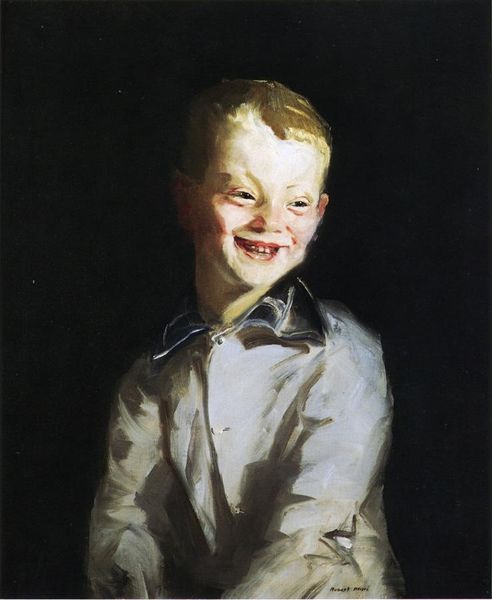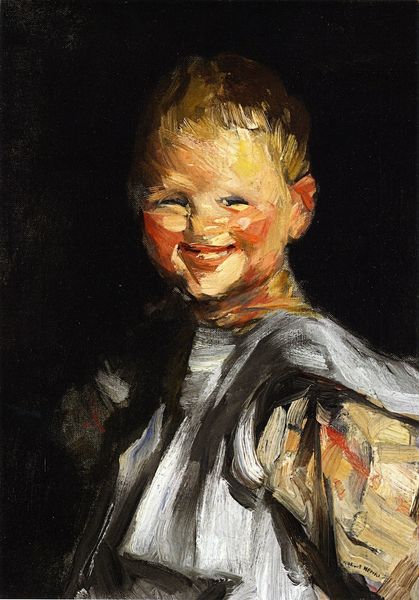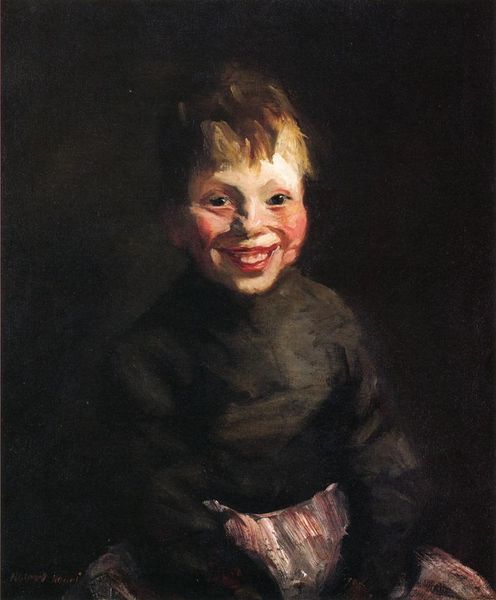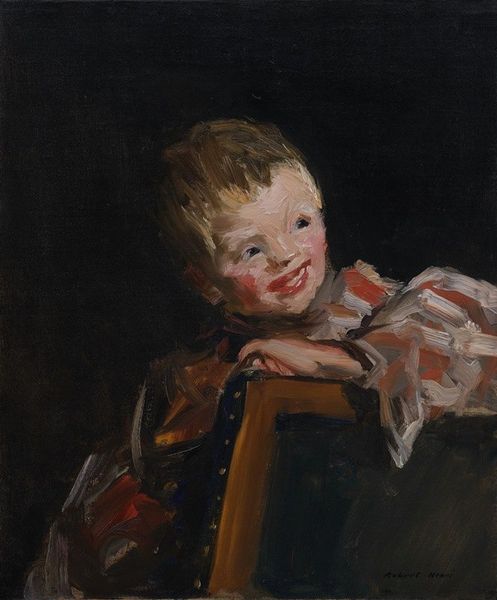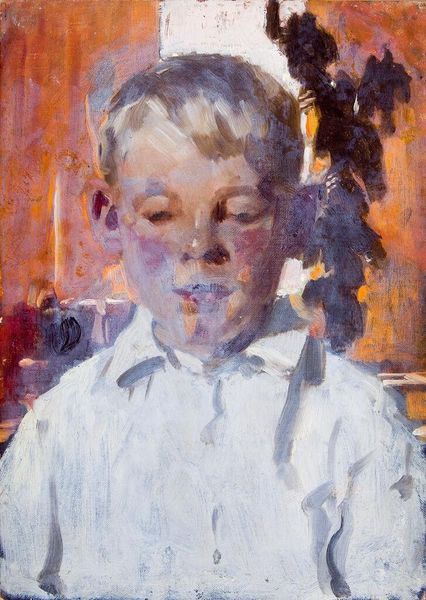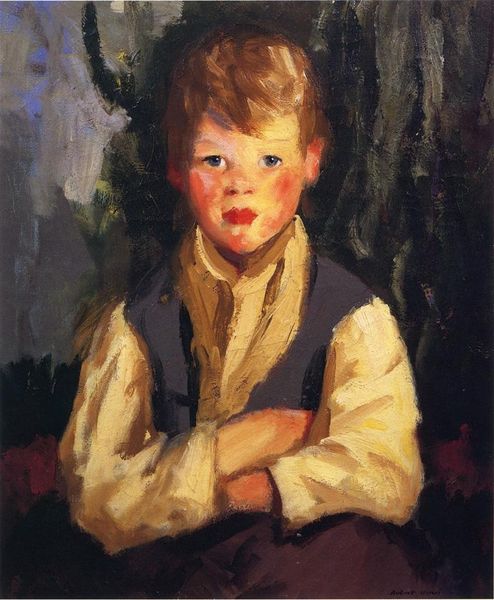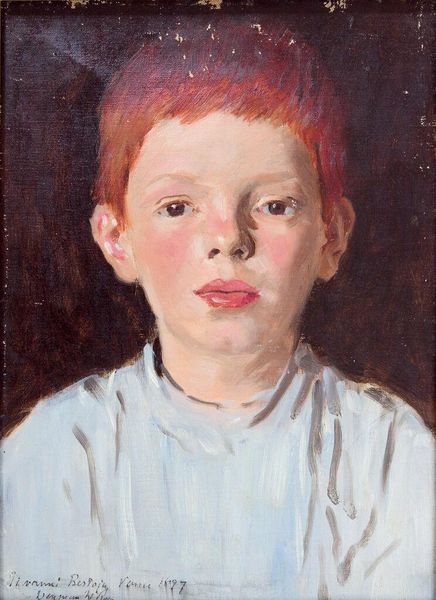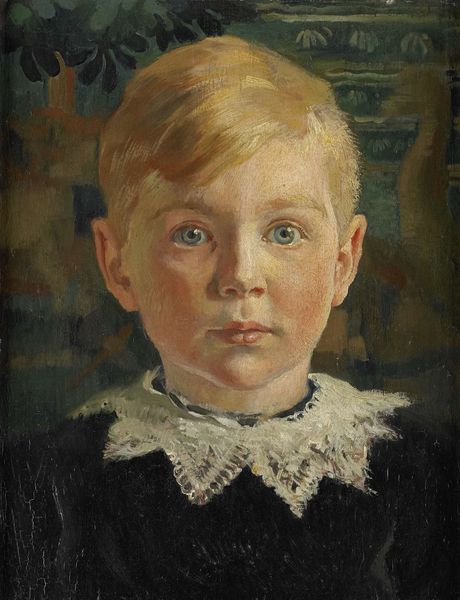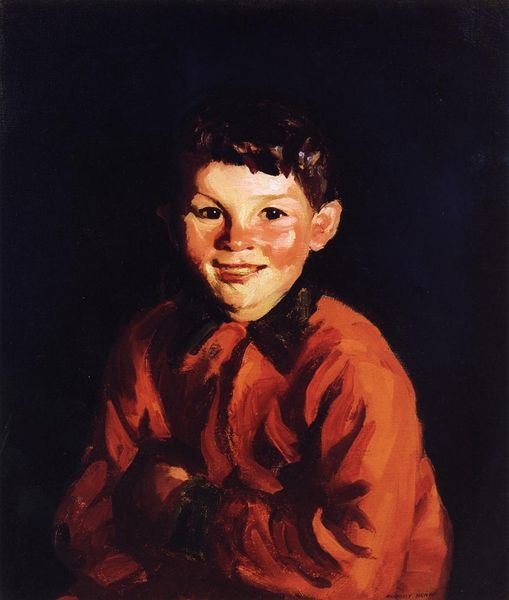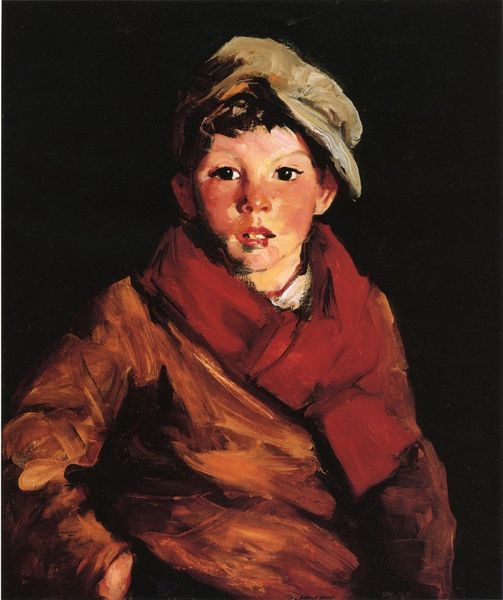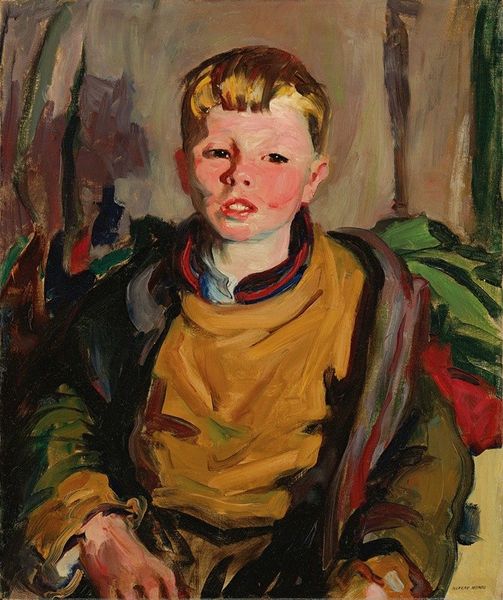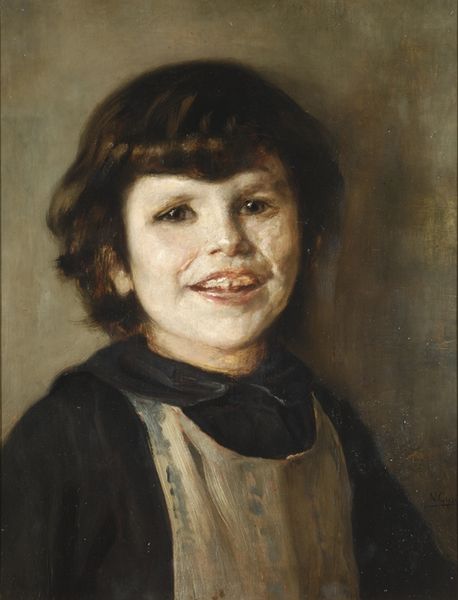
painting, oil-paint
#
portrait
#
figurative
#
painting
#
oil-paint
#
figuration
#
oil painting
#
ashcan-school
Copyright: Public Domain: Artvee
Curator: Oh, my first impression? Unadulterated joy! Look at that smile! It’s so genuine, you can almost hear the laughter bubbling up from somewhere deep inside him. Editor: Here we have Robert Henri's 1910 oil painting, “Laughing Boy." It epitomizes Henri’s Ashcan School focus on capturing the spirit and vitality of everyday life, particularly children from diverse social backgrounds. He saw something worth capturing, and his project involved seeing it. Curator: Everyday life alright, but touched with the extraordinary. There's something almost reckless about the way the paint is applied, like he was trying to catch a fleeting emotion before it disappeared. Did Henri often paint children from cities, as sort of emblems of a coming new kind of population? Editor: Precisely! Henri, deeply influenced by the social realism of the time, often depicted children from urban working-class neighborhoods. His aim was to represent their energy and individuality, celebrating them as emblems of resilience and possibility within changing social landscapes. This was, in a sense, the project of modernity as it manifested within painting: capturing everyday folks. Curator: Look at those rosy cheeks. Not overly stylized, yet very immediate. He saw something incredibly appealing, and immortalized it. Does the historical record say much about the models Henri would pick? Editor: Henri preferred to paint from life and sought models who possessed character and expressiveness, regardless of their social standing or conventional beauty. The emphasis was on authentic portrayal, reflecting the artist’s democratic ideals and rejection of academic conventions which typically favored staged aristocratic representations. He often painted his kids, yes. He seemed dedicated to documenting them. Curator: The loose brushwork and the muted background draw all our attention to that face, that unbridled joy. To the point where you stop analyzing and just...feel. Editor: Well put. Beyond technique, "Laughing Boy" embodies Henri’s commitment to democratizing art by showcasing the unvarnished realities of ordinary people. In choosing such subjects, Henri challenged prevailing artistic norms and promoted a more inclusive vision of American identity through art. Now how about that! A revolution contained in a single joyous laugh. Curator: Exactly! Which goes to show you that art can sometimes whisper truths louder than any manifesto. Editor: It reminds us that sometimes, a painting, and the reasons behind it, really, really matter. Thanks for lending an ear.
Comments
No comments
Be the first to comment and join the conversation on the ultimate creative platform.
